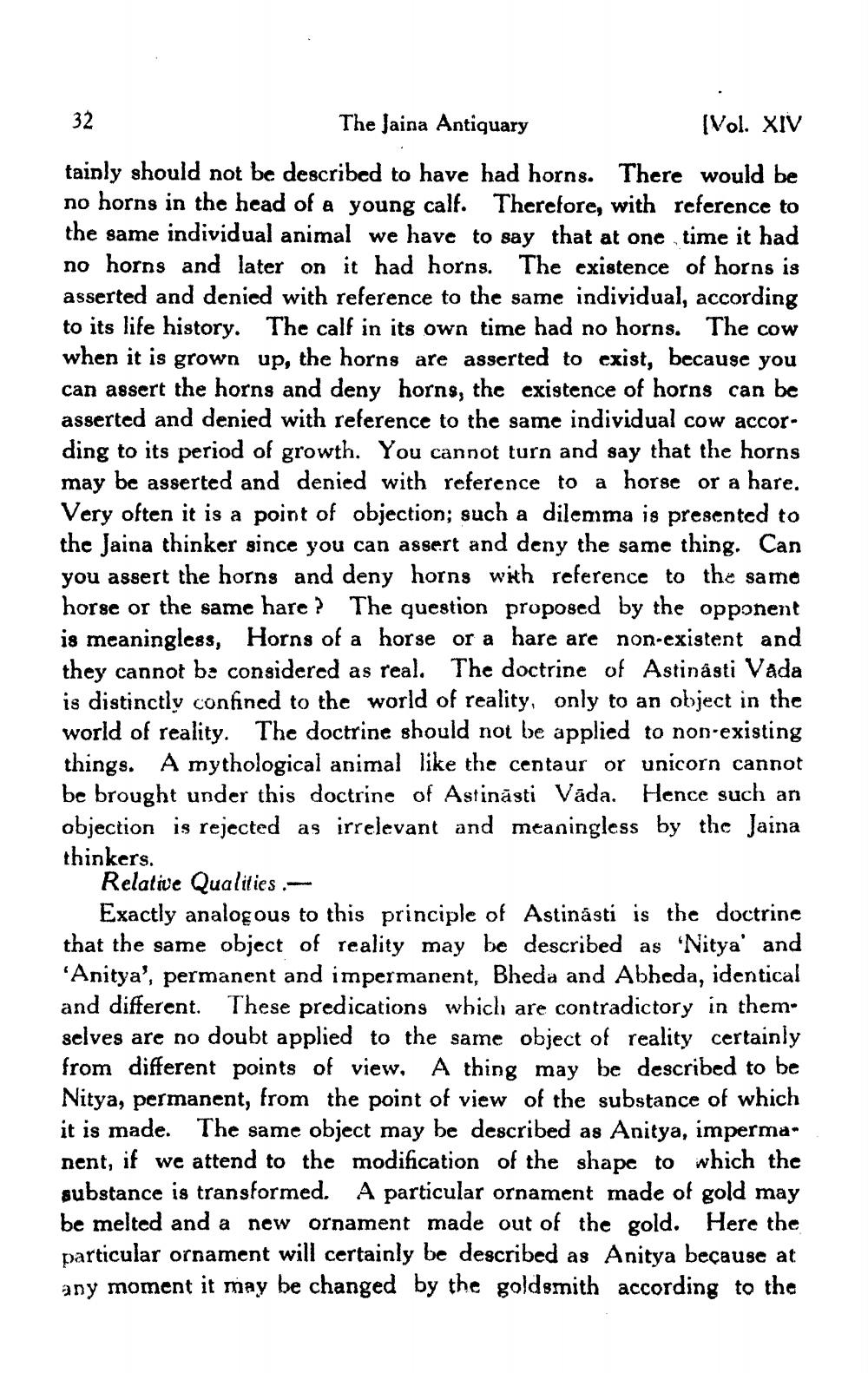________________
32
The Jaina Antiquary
(Vol. XIV tainly should not be described to have had horns. There would be no horns in the head of a young calf. Therefore, with reference to the same individual animal we have to say that at one time it had no horns and later on it had horns. The existence of horns is asserted and denied with reference to the same individual, according to its life history. The calf in its own time had no horns. The cow when it is grown up, the horns are asserted to exist, because you can assert the horns and deny horns, the existence of horns can be asserted and denied with reference to the same individual cow according to its period of growth. You cannot turn and say that the horns may be asserted and denied with reference to a horse or a hare. Very often it is a point of objection; such a dilemma is presented to the Jaina thinker since you can assert and deny the same thing. Can you assert the horns and deny horns with reference to the same horse or the same hare? The question proposed by the opponent is meaningless, Horns of a horse or a hare are non-existent and they cannot be considered as real. The doctrine of Astinásti Vada is distinctly confined to the world of reality, only to an object in the world of reality. The doctrine should not be applied to non-existing things. A mythological animal like the centaur or unicorn cannot be brought under this doctrine of Astināsti Vada. Hence such an objection is rejected as irrelevant and meaningless by the Jaina thinkers.
Relative Qualities.
Exactly analogous to this principle of Astinásti is the doctrine that the same object of reality may be described as 'Nitya' and 'Anitya', permanent and impermanent, Bheda and Abheda, identical and different. These predications which are contradictory in them. selves are no doubt applied to the same object of reality certainly from different points of view, Athing may be described to be Nitya, permanent, from the point of view of the substance of which it is made. The same object may be described as Anitya, impermanent, if we attend to the modification of the shape to which the substance is transformed. A particular ornament made of gold may be melted and a new ornament made out of the gold. Here the particular ornament will certainly be described as Anitya because at any moment it may be changed by the goldsmith according to the




